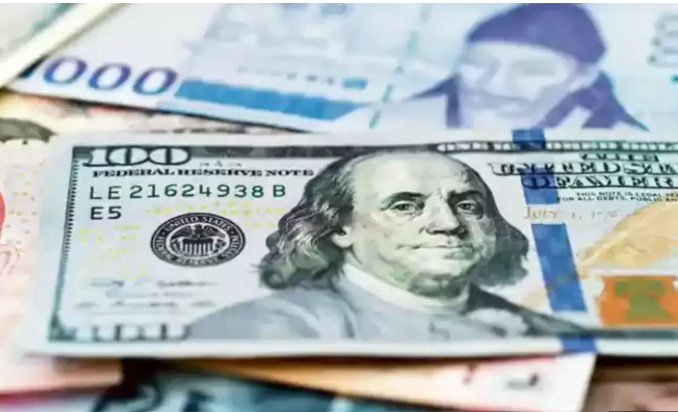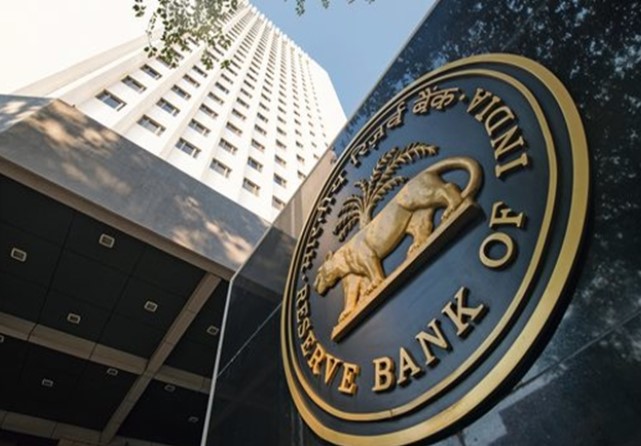
RBI Reports Robust Surge: India’s Forex Reserves Soar by $9 Billion to Reach $615 Billion Last Week
RBI Announces Strong Growth: India’s Foreign Exchange Reserves Surge by $9 Billion, Reaching $615 Billion in the Past Week
The Reserve Bank of India has reported a substantial boost in India’s foreign exchange reserves, surging by USD 9.112 billion to reach a formidable USD 615.971 billion in the week concluding on December 15, 2023. This surge, among the highest recorded in a single week, represents a notable achievement, hitting a 20-month high, as per data released by the RBI on Friday.
Comprising cash, bank deposits, bonds, and other financial assets denominated in currencies other than the Indian rupee, India’s foreign exchange reserves play a crucial role in strengthening the nation’s financial position. This impressive increase underscores the nation’s resilience and ability to fortify its currency against potential sharp declines, showcasing the strategic importance of a robust reserve buffer, especially during periods of market volatility.
According to the central bank’s weekly statistical data, India’s foreign currency assets (FCA), the largest constituent of the forex reserves, surged by USD 8.349 billion to USD 545.048 billion. FCA accounts for the impact of appreciation or depreciation of non-US units such as the euro, pound, and yen held within the foreign exchange reserves.
During the same week, gold reserves witnessed a rise of USD 446 million, reaching USD 47.577 billion. Preceding the week ending December 15, India’s overall foreign exchange reserves had climbed from USD 2.816 billion to USD 606.859 billion.
Although India’s foreign exchange reserves touched an all-time high of approximately USD 645 billion in October 2021, a subsequent decrease has been observed, primarily attributed to the increased cost of imported goods in 2022. Additionally, the relative decline in forex reserves can be traced back to RBI ‘s intervention in the market, aiming to safeguard against the depreciation of the rupee amid a strengthening US dollar.
Forex reserves, also known as foreign exchange reserves (FX reserves), constitute assets held by a nation’s central bank or monetary authority. Typically denominated in reserve currencies such as the US Dollar, Euro, Japanese Yen, and Pound Sterling, these reserves serve as a backing for the nation’s liabilities, including the native currency issued and deposits from financial institutions or the government held by the central bank.

The rise in India’s foreign currency assets underscores the country’s capacity to navigate global economic dynamics, especially in managing fluctuations in non-US currencies. This diversified holding, including the euro, pound, and yen, provides resilience against currency volatility and contributes to the overall stability of India’s foreign exchange reserves.
Gold, another significant component, witnessed a noteworthy increase during the week, contributing to the robustness of the nation’s reserve portfolio. The strategic allocation of assets, spanning foreign currencies and precious metals, positions India to mitigate risks and respond effectively to changes in the global economic landscape.
It’s important to note that, despite a temporary decline from the peak in 2021, India’s forex reserves remain substantial. The proactive intervention by the RBI to stabilize the rupee against a strengthening US dollar highlights the central bank’s commitment to maintaining exchange rate stability and safeguarding the country’s economic interests.
As India’s total foreign exchange reserves continue to evolve, these reserves not only serve as a financial safeguard but also play a pivotal role in supporting economic growth and facilitating international trade. The prudent management of these reserves reflects a strategic approach to economic resilience, providing the nation with the flexibility and resources needed to navigate uncertainties in the global financial landscape.The proactive interventions by the RBI in the market, particularly in response to the rupee’s depreciation against the US dollar, illuminate the delicate balance central banks strive to uphold. These interventions are designed to curb excessive currency depreciation, safeguarding the nation’s economic interests and preserving competitiveness in external trade.
The RBI’s proactive measures to intervene in the market, especially to counter the depreciation of the rupee against the US dollar, shed light on the delicate equilibrium central banks maintain. Such interventions aim to prevent excessive currency depreciation, ensuring that the nation’s economic interests are protected, and external trade remains competitive.
For the latest updates-click here


